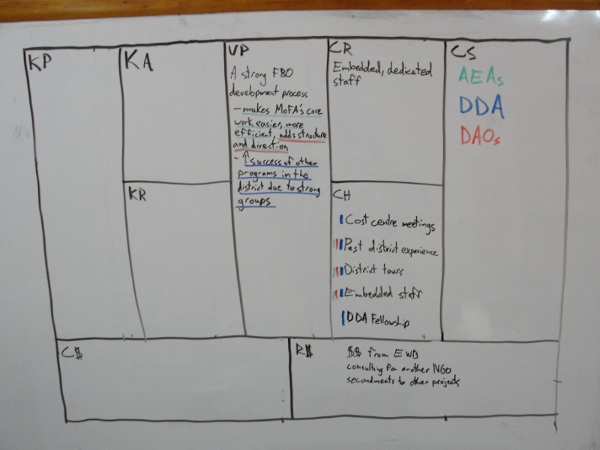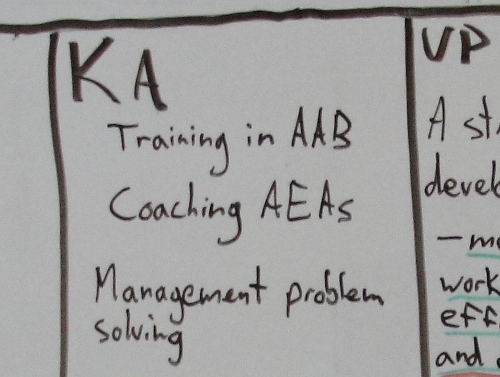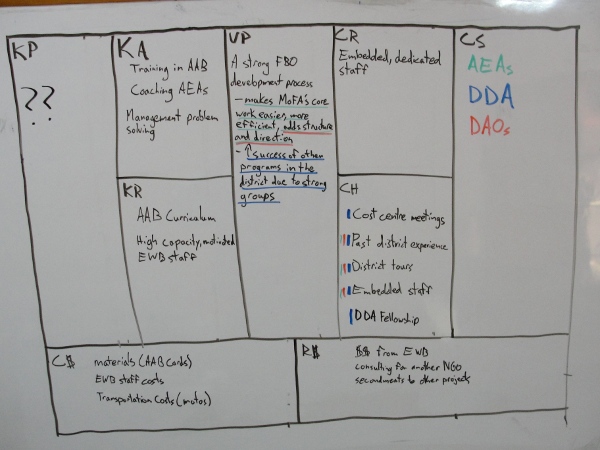If the right side of the canvas was about external customers, creativity and value, the left side is all about internal operations and efficiency. As a quick overview, here’s where we left off from last time after filling in the right side:
We’ll start with the Key Resources (KR) required to execute a Value Proposition. These can fall under a variety of categories such as physical resources or infrastructure, financial resources, intellectual resources and last but certainly not least, human resource. In EWB we put a strong emphasis on our human resources, have a fair amount of intellectual resources that we’ve developed over time, and have a very flexible financial resource in the untied funding we receive from so many amazing donors in Canada. While funding also shows up under Revenue Streams, the type of funding we receive is also a key resource for us because we often do work that wouldn’t be funded by money in the conventional development system. It’s thanks to this flexibility that we get to work on so many innovative and interesting new ideas.
For the Agricultural as a Business Program (AAB) that we’ve been following along with, our Key Resources are our human resources (high capacity staff and Junior Fellows) as well as the AAB curriculum itself that was developed over two years with MoFA field staff from all over the Northern and Upper East regions. We also had the flexible funding to test out this idea in the first place.
Next up are our Key Activities (KA). What do we actually need to do in order to make our model work? Activities can often be separated into problem solving, manufacturing or platform building categories. Once we had developed the AAB curriculum, our Key Activities were problem solving adoption and management issues in the districts that were interested in the program, as well as physically manufacturing (printing and laminating) the AAB cards themselves.
On the far left we have Key Partners (KP). These are other actors that you depend on to deliver your value proposition. In our situation it can sometimes feel difficult to separate our customer segments and partners because MoFA seems to fit as both. I would advocate however to keep MoFA on the customer side as much as possible, with Key Partners being other organizations we rely on. Doing the canvas for AAB after the fact made us realize that we lacked a lot in the Key Partners department. Some potential Key Partners to explore might be the outsourcing of the printing and lamination of the AAB cards, or perhaps an organization to run the AAB trainings in districts instead of relying solely on EWB staff.
To finish off our left side of the canvas we’ve got our Cost Structure (C$). This is the balance to our Revenue Streams and identifies the major costs associated with providing the Value Proposition. Where does all the money go?
In the case of AAB the overwhelming cost is EWB staff costs, with some additional costs for transport of staff, training costs and the costs of materials.
And that’s it, we now have our completed canvas! Next up we’ll talk about innovating on impact models using the canvas as a starting point.





